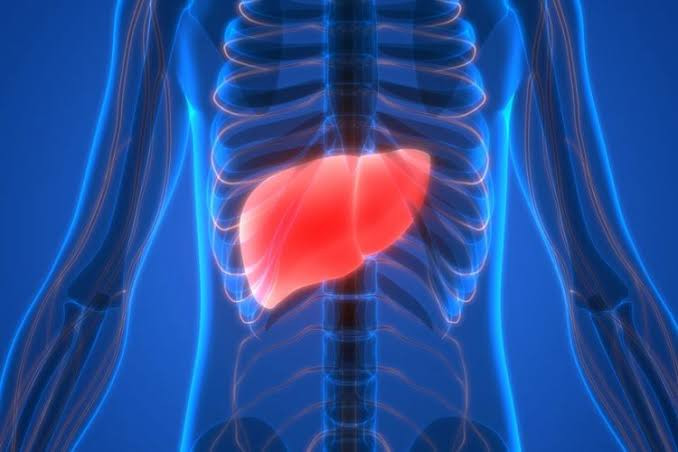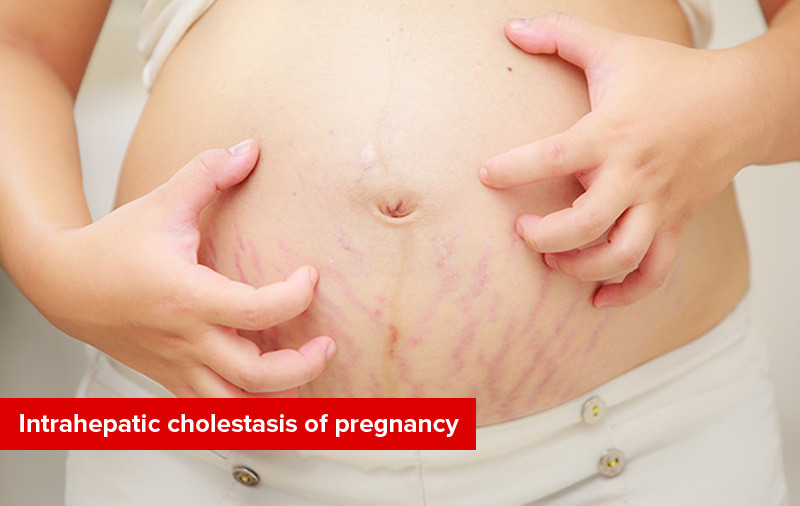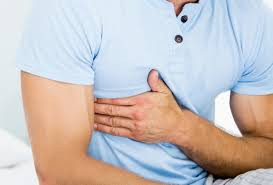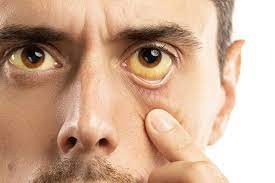Definition
Cirrhosis is the final stage of liver scarring caused by various liver diseases and conditions, such as hepatitis and chronic alcoholism (long-term). Each time the liver sustains injury, whether from disease, excessive alcohol consumption, or other factors, liver cells undergo a process of attempted self-repair. In the process of self-repair, scar tissue forms. With an increasing amount of scar tissue, the function of liver cells is disrupted. Advanced-stage cirrhosis can be life-threatening.
Liver damage caused by cirrhosis generally cannot be reversed. However, if liver cirrhosis is diagnosed early and its causes are treated, further damage can be minimized.
Causes
There are several diseases and conditions that can damage the liver and cause cirrhosis. Several causes of cirrhosis include:
- Chronic alcohol abuse
- Chronic hepatitis viruses (hepatitis B, C, and D)
- Accumulation of fat in the liver in non-alcoholic fatty liver disease
- Accumulation of iron in the body (hemochromatosis)
- Cystic fibrosis
- Accumulation of copper in the liver in Wilson's disease
- Biliary atresia or poorly formed bile ducts
- Alpha-1 antitrypsin deficiency
- Inherited sugar metabolism disorders such as galactosemia and glycogen storage diseases
- Genetic digestive disorders such as Alagille syndrome
- Liver diseases caused by immune system disorders such as autoimmune hepatitis
- Bile duct damage (primary biliary cirrhosis)
- Hardening and scar tissue formation in the bile ducts
- Infections, such as syphilis or brucellosis
- Medications, including methotrexate or isoniazid
Risk factor
Risk factors for hepatic cirrhosis include:
- Excessive alcohol consumption
- Overweight: Being overweight increases the risk of diseases or health disorders that can cause cirrhosis, such as non-alcoholic fatty liver disease.
- Chronic viral hepatitis
Symptoms
Cirrhosis often does not have symptoms or signs in the initial stage until the damage to the liver extends. The signs and symptoms of liver cirrhosis include:
- Fatigue
- Easy bruising or bleeding
- Loss of appetite
- Nausea
- Swelling in the legs or ankles
- Weight loss
- Itchy skin
- Yellowing of the skin and eyes (jaundice)
- Fluid buildup in the abdomen (ascites)
- Blood vessels in the skin appearing like spider veins (spider nevi)
- Red palms
- In women, cessation or irregularity of menstrual cycles unrelated to menopause
- In men, loss of libido, breast enlargement (gynecomastia), or testicular atrophy (shrinkage of the testicles)
- Confusion, drowsiness, and slurred speech or stuttering if complications of brain dysfunction occur (hepatic encephalopathy)
Diagnosis
Individuals with hepatic cirrhosis usually do not have symptoms. Typically, cirrhosis is identified through tests or routine blood tests. To establish the diagnosis, the doctor will recommend one or more of the following examinations:
- Laboratory tests: These are conducted to diagnose the cause and severity of cirrhosis. Liver damage indicators such as increased bilirubin or specific enzymes are examined. Kidney function is assessed through blood creatinine levels. Screening for hepatitis virus infection and blood clotting ability tests will also be conducted.
- Imaging tests: Magnetic Resonance Elastography (MRE) may be recommended to detect liver stiffening. Other imaging tests such as MRI, CT scans, and ultrasound may also be performed.
- Biopsy: Tissue samples (biopsy) are not always necessary for diagnosis. However, doctors may use them to determine the severity and causes of liver damage.
If an individual has cirrhosis, the doctor will recommend routine diagnostic tests to monitor the signs of disease progression or complications, especially esophageal varices (widening of blood vessels in the esophagus) and liver cancer.
Management
The treatment of hepatic cirrhosis depends on the cause and stage of liver damage. The aim of treatment is to slow the growth of scar tissue in the liver and to prevent and treat symptoms or complications. If the damage is severe, individuals may need to be hospitalized.
Treatment for the Underlying Causes of Cirrhosis
In the early stages of cirrhosis, minimizing liver damage involves treating the underlying causes. Treatment options include:
- Alcohol dependency therapy for individuals with cirrhosis caused by excessive alcohol consumption
- Weight loss and blood sugar control for individuals with cirrhosis caused by non-alcoholic fatty liver disease
- Medications to cure hepatitis for individuals with cirrhosis caused by hepatitis
- Medications to control other causes and symptoms of cirrhosis. For instance, early diagnosis of primary biliary cirrhosis allows for treatment that significantly delays its progression.
Other medications are available to alleviate symptoms such as itching, fatigue, and pain. Additionally, nutritional supplements may be prescribed to address nutritional imbalances associated with cirrhosis and prevent bone loss or osteoporosis.
Treatment for the Complications of Cirrhosis
Some treatments for cirrhosis complications include:
- Fluid overload in the body, such as swelling or ascites, can be managed with a low-salt diet and medications to prevent fluid accumulation. Severe fluid buildup may require fluid removal procedures or surgery to reduce pressure.
- Portal hypertension, or increased blood pressure in the liver veins, can be controlled with certain blood pressure medications to prevent bleeding. Doctors may perform upper gastrointestinal endoscopy routinely to detect enlarged varices in the esophagus or stomach that may bleed.
- If varices are present, medication may be necessary to reduce the risk of bleeding. In cases of variceal bleeding or a tendency to bleed, ligation may be required, which involves tying off the ruptured blood vessel to stop the bleeding or reduce the risk of further bleeding. In severe cases, a shunt may be necessary to reduce blood pressure in the liver.
- Antibiotics or other infection treatments can treat infections. Doctors may also recommend influenza, pneumonia, and hepatitis vaccinations.
- The increased risk of liver cancer is managed through regular blood tests and ultrasound scans to monitor for signs of liver cancer.
- Hepatic encephalopathy, a brain disorder caused by the buildup of toxins in the blood that cannot be detoxified by the liver, is managed with medications to reduce the buildup of toxins in the blood.
Liver Organ Transplant
In cases of advanced cirrhosis, the liver may cease to function. At this stage, liver transplantation may become the only treatment option. Liver transplantation involves replacing part or all of the damaged liver with a healthy liver from a donor.
Cirrhosis is one of the most common reasons for liver transplantation. Candidates for liver transplantation undergo thorough evaluation to determine if their condition is suitable for receiving a donor liver and to assess the likelihood of achieving positive outcomes after surgery.
Lifestyle and Home Treatment
If you have cirrhosis, follow these steps to minimize liver cell damage:
- Avoid alcohol consumption: Even if alcohol is not the cause of your cirrhosis, it's crucial to abstain from alcohol completely. Any amount can be toxic to liver cells.
- Consume a low-salt diet: Excess salt can worsen fluid retention in the body, leading to increased swelling in the abdomen and legs.
- Eat a healthy diet: People with cirrhosis often experience nutritional imbalances. Maintain a balanced diet and increase your intake of fruits and vegetables. Choose lean proteins such as peas, poultry, or fish, and avoid raw seafood.
- Prevent infections: Cirrhosis weakens the immune system, making it harder to fight infections. To reduce the risk of infections, protect yourself by frequently washing your hands and avoiding contact with sick individuals. Ensure you are vaccinated against hepatitis A and B, influenza, and pneumonia.
- Use over-the-counter medications cautiously: Cirrhosis impairs the liver's ability to process medications. Always consult with your doctor before taking any medication.
Complications
Complications of Hepatic Cirrhosis include:
- Portal hypertension is the increased blood pressure in the veins supplying the liver.
- Swelling in the legs and abdomen: Increased pressure in the portal vein leads to fluid accumulation in the legs (edema) and in the abdomen (ascites). Edema and ascites can also occur due to the liver's decreased ability to produce certain blood proteins, such as albumin.
- Enlargement of the spleen (splenomegaly): Portal hypertension can cause spleen enlargement, followed by disturbances in the production of white blood cells and platelets. Decreased white blood cells and platelets in the blood can be a sign of cirrhosis.
- Bleeding: Portal hypertension redirects blood to smaller veins, increasing the risk of rupturing smaller blood vessels and causing serious bleeding. Esophageal varices and gastric varices formed in cirrhotic individuals can also lead to life-threatening bleeding. Continuous bleeding may occur if the liver cannot produce enough clotting factors.
- Infection: Cirrhosis weakens the body's ability to fight infection. Ascites can cause bacterial peritonitis, a serious infection of the abdominal wall lining.
- Malnutrition: Cirrhosis makes it difficult for the body to process nutrients, leading to weakness and weight loss.
- Accumulation of toxins in the brain (hepatic encephalopathy): A damaged liver cannot effectively remove toxins from the blood, leading to their accumulation in the brain, which can cause mental confusion and difficulty concentrating. Over time, hepatic encephalopathy can progress to a coma.
- Jaundice occurs when diseased liver cells cannot clear bilirubin from the blood, causing its levels to rise. Bilirubin is a yellow-colored blood waste product. Jaundice causes yellowing of the skin and eyes and dark urine.
- Bone disease: Some people with cirrhosis experience bone loss and have a higher risk of fractures.
- Increased risk of liver cancer: Most people with liver cancer have a history of cirrhosis.
Prevention
To prevent hepatic cirrhosis or reduce liver cell damage if you already have liver disease, follow these steps:
- Avoid alcohol consumption, especially if you already have liver disease, particularly cirrhosis.
- Eat a healthy diet rich in fruits, vegetables, grains, and lean protein sources without excess fat. Reduce consumption of oily and fatty foods.
- Maintain an ideal body weight through a balanced diet and regular exercise.
- Reduce the risk of hepatitis by avoiding the sharing of needles and practicing safe sex by using condoms. This can lower the risk of hepatitis B and C infections. Additionally, consider getting vaccinated for hepatitis.
When to see a doctor?
If you experience any of the signs and symptoms of cirrhosis listed above, it's important to consult your doctor promptly.
- dr Nadia Opmalina
Cirrhosis. (2021). Retrieved 10 January 2022, from https://www.mayoclinic.org/diseases-conditions/cirrhosis/symptoms-causes/syc-20351487
Wolf DC. (2020). Cirrhosis. Retrieved 10 January 2022, from https://emedicine.medscape.com/article/185856-overview
Slivinski N. (2020). Cirrhosis and your liver. Retrieved 10 January 2022, from https://www.webmd.com/digestive-disorders/understanding-cirrhosis-basic-information
Cirrhosis of the liver. (2020). Retrieved 10 January 2022, from https://my.clevelandclinic.org/health/diseases/15572-cirrhosis-of-the-liver
Cirrhosis. (2020). Retrieved 10 January 2022, from https://www.nhs.uk/conditions/cirrhosis/
Gines P, Krag A, and Abraldes JG. (2021). Liver cirrhosis. The Lancet. Volume 398, Issues 10308, P1359-1376. Doi https://doi.org/10.1016/S0140-6736(21)01374-X
Sharma B, John S. (2021). Hepatic cirrhosis. StatPearls LCC Publishing. Retrieved 10 January 2022, from https://www.ncbi.nlm.nih.gov/books/NBK482419/












